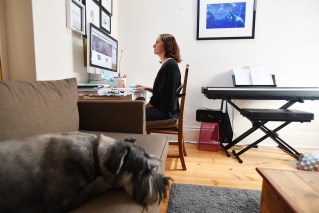Unemployment rate drops to 6.6 per cent


The economy added 50,000 new jobs in December. Photo: TND
Australia’s unemployment rate has fallen to 6.6 per cent after the economy gained 50,000 new jobs in December.
The figures – an improvement on 6.8 per cent in November – were broadly in line with market expectations and coincide with surging retail sales and rising property prices.
Full-time employment increased by 35,700 to 8.8 million people, while part-time employment lifted by 14,300 to 4.1 million people.
The ABS said 90 per cent of the jobs lost between March and May have now been recovered, though it noted the recovery in full-time work has lagged that in part-time.
“While part-time employment was higher than March, full-time employment was 1.3 per cent below March,” said Bjorn Jarvis, head of labour statistics at the ABS.
“The recovery in hours worked has been slower than the recovery in employment.”
The underemployment rate, which measures the proportion of people working fewer hours than they would like to be, also fell in December.
It went from 9.4 per cent to 8.5 per cent, while the proportion of working-age adults in the workforce increased from 66.1 per cent to 66.2 per cent.
BIS Oxford Economics chief economist Sarah Hunter said the data confirmed “Australia’s economy is a relative outperformer”.
“But the data also highlight that for some sectors and regions, the pandemic is still having a tangible negative impact,” she said.
“Across the states, NSW in particular is lagging behind, with the unemployment rate 2 percentage points higher than it was in early 2020.
“The disproportionate impact on younger workers, who are more likely to work in the sectors that are still not able to operate normally, such a hospitality, arts and recreation, is also apparent, as the unemployment rate for this group is 2.3 points higher than a year ago, compared to 1.5 points for the whole of the labour force.”
The figures nonetheless provide further evidence that the economy was gathering momentum at the end of last year, prior to fresh coronavirus outbreaks in Sydney’s Northern Beaches.
But the latest consumer sentiment reading from Westpac and the Melbourne Institute – a loose indicator of future spending – points to renewed jitters within the community, with confidence falling by 4.5 per cent in January.
Westpac chief economist Bill Evans said a pull back was to be expected given the recent outbreaks in Sydney.
But he noted the fall in confidence was far smaller than that seen after Victoria’s second wave (-15 per cent).
“It still points to healthy consumer sentiment,” he said of Wednesday’s release.
“At 107 [points], optimists clearly outnumber pessimists, while the Index is 14.6 per cent above the level a year ago and 41.5 per cent above the low in April.”










